Daniel Coyle's Blog, page 20
May 31, 2011
A Gauge for Measuring Effective Practice
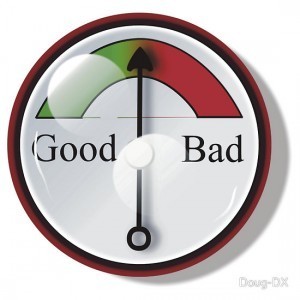 If you distilled all the new science about talent development into two words of advice, they would be "practice better."
If you distilled all the new science about talent development into two words of advice, they would be "practice better."
That's it. Practice. Better.
Forget everything else about your genes, your potential — it's all just noise. The most basic truth is that if you practice better, you'll develop your talent — and you won't develop your talent unless you practice better. Period.
For most of us, that's precisely where we bump into a common problem: how? Specifically, which practice method to choose? Do we focus on repeating a skill we've got, or do we work on new skills? What kinds of drills work best? What's the best way to spend the limited time we've got?
When it comes to figuring out how to practice better, we often feel like we're standing in the cereal aisle of the grocery store. There are lots of seemingly attractive choices. But how do we pick the ones that have the most nutrition, and avoid the ones that are empty calories?
I've been thinking about this a lot lately, and I'd like to use this blog as a test drive for a new gauge for comparing practice methods. I'm calling it the R.E.P.S. Gauge.
(Okay, acronyms are cheesy, I know. But they've been around for a long time because they work.)
R stands for Reaching/Repeating.
E stands for Engagment.
P stands for Purposefulness
S stands for Strong, Direct, Immediate Feedback.
The idea behind the gauge is simple: you should practice methods that contain these key elements, and avoid methods that don't. Below, you'll find a description of each element along with a sample choice to illustrate how it works.
Element 1: Reaching and Repeating. Does the practice have you operating on the edge of your ability, reaching and repeating? How many reaches are you making each minute? Each hour?
Scenario: a math teacher trying to teach multiplication tables to 30 students.
• Teacher A selects a single student to write the tables on the board.
• Teacher B creates a "game show" format where a math question is posed verbally to the entire class, then calls on a single student to answer.
Result: Teacher B chose the better option because it creates 30 reaches in the same amount of time. In Classroom A, only one student had to truly stretch — everybody else could lean back and observe. In Classroom B, however, every single member of the class has to stretch (picture the wires of their brains, reaching) in case their name is called. Not a small difference.
Element 2: Engagement. Is the practice immersive? Does it command your attention? Does it use emotion to propel you toward a goal?
Scenario: a violin student trying to perfect a short, tough passage in a song.
• Student A plays the passage 20 times.
• Student B tries to play the passage perfectly — with zero mistakes — five times in a row. If they make any mistake, the count goes back to zero and they start over.
Result: Student B made the better choice, because the method is more engaging. Playing a passage 20 times in a row is boring, a chore where you're simply counting the reps until you're done. But playing 5 perfectly, where any mistake sends you back to zero, is intensively engaging. It's a juicy little game.
Element 3: Purposefulness. Does the task directly connect to the skill you want to build?
Scenario: a basketball team keeps losing games because they're missing late free-throws.
• Team A practices free throws at the end of a practice, with each player shooting 50 free throws.
• Team B practices free throws during a scrimmage, so each player has to shoot them while exhausted, under pressure.
Result: Team B made the better choice, because their practice connects to the skill you want to build: the ability to make free throws under pressure, while exhausted. (No player ever gets to shoot 50 straight in a game.)
The fourth element: Strong, Direct, Immediate Feedback. In other words, the learner always knows how they're doing — where they're making mistakes, where they're doing well — because the practice is telling them in real time. They don't need anybody to explain that they need to do X or Y, because it's clear as a bell.
Scenario: a high school student trying to improve her SAT score.
• Student A spends a Saturday taking a mock version of the entire SAT test, receiving results back one week later.
• Student B spends a Saturday taking a mini-version of each section, self-grading and reviewing each test in detail as soon as it's completed.
Result: Student B made the better choice, because the feedback is direct and immediate. Learning immediately where she went wrong (and where she went right) will tend to stick, while learning about it in a week will have little effect.
The idea of this gauge is simple: practices that contain all four of these core elements (R.E.P.S.) are the ones you want to choose, because those are the ones that will produce the most progress in the shortest amount of time. Audit your practices and get rid of the methods that have fewer R.E.P.S. and replace them with methods that have lots.
The other takeaway here is that small, strategic changes in practice can produce huge benefits in learning. Making a little tweak to the learning space — for instance, teaching multiplication through a little juicy game that keeps 30 people on their toes — can have big effects on learning velocity. Spending time strategizing your practice is one of the most effective investments you can make in developing talent.
But as I said at the start, this idea is still in the experimental phase. What other elements should we consider including? How do you achieve your best practices? What else should we add here?
As a sidenote, this will be my last blog entry for a little while, as I'm going to take the summer to work on a couple of book projects. I will be checking in periodically, of course, and will start up again in earnest when the school year starts in August. Thanks for reading, for all your insightful and helpful comments, and for making this project so fun and worthwhile.
May 16, 2011
Why Being Stupid is Close to Being Smart
 Okay, so I did a pretty stupid thing the other day. Let me set the scene:
Okay, so I did a pretty stupid thing the other day. Let me set the scene:
INTERIOR: HOTEL BALLROOM — AN ATTENTIVE CROWD OF SEVERAL HUNDRED EDUCATORS AND SCIENTISTS. I AM ONSTAGE, HAVING JUST FINISHED A SPEECH ABOUT TALENT, NEURAL CIRCUITS, AND PRACTICE. A YOUNG MAN IN FRONT ROW RAISES HAND.
"Okay, this theory sounds great," he says. "But how does it help us teach kids how to read?"
CAMERA ZOOMS IN ON MY FACE. IT'S BLANK.
'Uhhh, well," I begin. "The thing is…"
I BEGIN TO TALK, BUT DON'T REALLY ANSWER THE QUESTION. THE TRUTH GRADUALLY BECOMES CLEAR: I'M FISHING AROUND. AUDIENCE GETS RESTLESS. I END UP MUMBLING A FEW THINGS ABOUT MOTIVATION THEN SITTING DOWN. FADE TO BLACK.
Those kind of moments happen pretty often in our lives, moments where a trusted ability or piece of knowledge we thought we had suddenly deserts us without warning. I knew the answer to the question, but for some reason I couldn't deliver it. I don't know why.
I don't think there's an essential difference between my screwup and a tennis player fluffing an easy volley, or a software designer botching a routine piece of coding. We usually call it choking — but I don't think that's quite right. "Choking" implies that it's a response to emotional pressure, like a golfer missing a six-inch putt on the final hole of the Masters — and this isn't really a response to pressure. It's far more like a short-circuit. Things are working fine, and suddenly — bzzzzzzzt! — they're not.
But here's the thing — we never short-circuit when it comes to simple actions. We never go to brush our teeth and suddenly forget how to do it. We never short-circuit when it comes to walking down the sidewalk, or knowing how to unfold the newspaper, or how to eat chocolate cake. It's usually complexity that causes it. So the real question is, what is complexity? And why is it so often connected with short-circuits?
Complexity is another way of saying that there's a lot of stuff going on at a lot of different levels. One way to approach it is to divide skills into two basic types: hard skills and soft skills.
1. "Hard" skills are where there is a single right way to do something. Precision counts for everything. They're skills where you want a tiny Swiss watchmaker inside you, performing the task with absolute control, doing it the same every time. Some examples:
a swimming stroke
music fundamentals: how to hold an instrument; play a certain chord
basic math procedures
2. "Soft" skills, where there are lots of equally good ways to accomplish a goal. Soft skills are about flexibility; having a lot of options to get past an infinitely varying set of obstacles. They're skills where you want a tiny skateboarder inside you, making the moves in response to whatever obstacle comes next. Examples of soft skills include:
communication skills — writing, speaking
the improvisatory parts of sports/music/business
art
Complex activities — which of course are really neural circuits in your brain — have hard and soft skills woven together. Picture it as complex forest of circuits, with redwoods (the hard, high-precision skills) mixed with kudzu vines (the soft, high-flexibility skills). Or, to pick another analogy, performing a complex action is like building a Swiss watch at the same time you're pulling double ollies at a skateboard park.
Think of what you're doing right now, for instance. To read this sentence, you have to 1) instantly and perfectly translate these black squiggles into letters, combine those letters into words and then translate those words into meaning — a.k.a. the hard, high-precision skill; 2) scan ahead, connect ideas, and build an unfolding prediction what might happen next — a.k.a. the soft, high-flexibility skills. And you have to do it in microseconds, simultaneously. It's pretty dazzling.
Here's the thing with complexity: when things go wrong, they really go wrong. When a single key element of our skateboarding watchmaker fails to function, everything grinds to a halt, and it's not pretty. The lights go out; we're rendered mute. Just as when a kid is struggling to read or, say, a person on stage is fumbling with an answer. In other words, Homer Simpson moments of stupidity are an inevitable outcome of every complex system. The price of dazzlement is occasional shame.
In the end, I think a few things come out of this.
1. Don't be fooled by short-circuits. They're not verdicts on ability or potential. It only seems as if the wheels have come off, but in fact it's a smaller problem. When it comes to complex skills, being stupid is often pretty close to being smart.
2. To build complex talents, first analyze them to figure out the hard skills and soft skills. What elements have to be precise, 100 percent of the time? What elements change depending on the obstacle?
3. Practice hard and soft skill separately — the hard skill first and the soft skill second
I think the biggest takeaway here is that the shape of the practice must match the shape of the skill you want to build. For hard skills, the practice space should resemble a watchmaker's shop — with lots of slowness, precision, and a keen attention to errors. Think of the way a master music teacher works with a beginner, often spending an entire lesson on how to hold the instrument. Get it right the first time, build that precision. Don't move forward until you've got it wired.
For flexible skills, on the other hand, the practice space should resemble a really fun skateboard park: lots of self-directed action at an endless variety of obstacles where you make lots of errors and learn a little something from each of them. Most flexible skills ideally don't require a coach, but rather an addictive space to "play."
This is one of those areas where we can "steal" a lot from others — especially regarding practice strategies for hard and soft skills. What strategies work best for you?
(PS — Speaking of fun and useful places to play: if you're interested in music, you should check out master teacher Hans Jensen's new website, Ovation Press String Visions. Check it out.)
May 2, 2011
The Angry Birds Theory of Success
Of all the profound mysteries about talent development, here's one that might be the most mysterious: Why do underdogs succeed so often?
Because they do. Look at the biggest success stories in business, academics, sports, music. An unusually high percentage started out as hopeless longshots — from Shakespeare to Apple computer to the 1969 Mets.
The point is that we all live in a world where underdogs win all the time. They succeed with such clocklike regularity that they pose a fascinating question: what are we missing here? Are the underdogs merely getting lucky? Or are there subtle, powerful advantages — psychological, social, tactical advantages — to being an underdog?
Here's the question: what if underdogs aren't really underdogs? What if they're really the overdogs?
2.
I recently had the privilege of attending the U.S. Soccer Player Development Summit at the Nike headquarters in Beaverton, Oregon. The meeting was really cool and inspiring — the kind of gathering where a lot of super-smart, committed people come together their Kennedy Moon Shot moment — the time when they point their compass at some distant goal (in this case, a World Cup victory) and get to work.
On paper, U.S. soccer fits the classic definition of an underdog. American players, while athletic and tactically smart, are not as technically skilled as top players in other countries. As U.S. Youth Technical Director and former U.S. team captain Claudio Reyna pointed out, when you compile a list of the top 100 world players, you will include precisely zero American players.
One of the problems, I think, is that while American soccer is in fact a huge underdog, the players and coaches don't live the life of an underdog. They don't feel like underdogs.
Picture the world from a young American player's point of view. They are born into the middle class. When they are young, they are identified as a promising talent. Parents love and admire them. They make all the best travel teams. The World Cup is a distant abstraction — the real goal is success in their town, state, region. Their life is a steady climb of success and fulfillment, and the cherry on top comes on the big day: when they make the national team and put on the jersey.
Compare that to the story of a European or South American kid, for whom soccer is not a sport, but something closer to a religion. Who grows up seeing every person he knows weeping/rejoicing/freaking out every four years at the World Cup. Who dreams nightly of hoisting that trophy, of being that hero.
The problem U.S. Soccer faces isn't structural — it's narrative. Like a lot of us, they are Davids who are living in a world that treats them like Goliaths. They're missing out on all the psychological advantages of being an underdog.
So the real question isn't about talent. It's about, how something bigger and more universal: why is that David story so powerful? And how do we figure out how to plug into it?
3.
While I was thinking about all this David/Goliath stuff, I started playing Angry Birds for the first time. If you don't know the game, check it out. On second thought, don't, because it's highly addictive.
(The game works like this: you use a touch-screen slingshot to launch birds at well-defended green pigs who've stolen the birds' golden eggs. It's an echo of David and Goliath, if Goliath were a smug green pig.)
So why is this game so fun and addictive? Four things:
1) You are targeting a huge, meaningful, distant goal. (Those golden eggs!)
2) You are attacking a superior, well-defended force who stands between you and your goal.
3) You have the freedom to innovate and experiment — to pick different angles, strategies, tactics.
4) You bond. Your birds sacrifice for each other, work together, cheer when something good happens.
I'd like to argue that the reason you put so much energy into Angry Birds is the same reason that underdogs work so hard and win so often. Being an underdog isn't about merely getting lucky — rather, it's about tapping into the psychological and social advantages that are built into the underdog story. Aggression. Purpose. Innovation. Social ties. Being an underdog is the equivalent of getting a daily dose high-octane fuel.
(To illustrate this point, imagine if the game were reversed and instead of playing as the Angry Birds, you were forced to play as the Smug Green Pigs, guarding the golden eggs. Would it be any fun? Would you be inclined to put a lot of energy and thought into the game?)
4.
So what do we do to tap into the underdog engine? We could start with three basic questions:
1) What's the Giant Goal — the ultimate, golden-egg target?
2) Who's Goliath? Who's standing in your way? Who thinks you can't do it?
3) What innovations can you use? Remember, you are on the attack, not the defense.
4) Who is with you on this journey — what connections exist, and how can you strengthen those?
The truth is, it's really difficult to succeed in this world, and if you're lucky enough to succeed, it's even more difficult to keep it up. In the largest sense, we are all underdogs. Finding a way to express and communicate the fundamental truth of that situation seems to me to be one of the most important thing a group could do for itself.
So the real question is, What's your story?
April 18, 2011
How to Quit Like a Champion
 We are told, from the time we are old enough to understand, that we should never, ever quit. Quitting is seen as a dangerous and worrisome character flaw, a toxic trait to be avoided at all costs. As Vince Lombardi concisely put it, winners never quit and quitters never win.
We are told, from the time we are old enough to understand, that we should never, ever quit. Quitting is seen as a dangerous and worrisome character flaw, a toxic trait to be avoided at all costs. As Vince Lombardi concisely put it, winners never quit and quitters never win.
Okay, then why do so many great performers have histories of quitting, both on the large and small scale? Michelangelo and Leonardo were always quitting projects short of completion (there are entire collections devoted to their half-finished work).
Or businessmen like billionaire Richard Branson, who habitually starts dozens of new projects and ends up quitting most of them (anybody want to buy Virgin Megastores?).
Or there's Michael Jordan, who quit basketball to play baseball, then quit baseball to go back to basketball.
Or President Harry Truman, who might have wound up a haberdasher if he didn't have the foresight to quit. And don't even get me started about great writers, who might be the most quit-happy group of all, a point that can be underlined with a quick glance at Mark Twain's resume (riverboat pilot, printer, miner, newspaperman, etc.).
The point is, when you trace the paths of many top performers, you find very few straight lines. Beneath their forward progress is a churn of false starts, a steady drumbeat of quitting.
The key distinction, I think, is between quitting with a capital Q — giving up, throwing in the towel — and quitting with a small Q — which might more accurately be called "adapting." The great performers are small-Q quitters. They quit strategically. They hit a wall, and try something else. They keep moving forward, in a telltale staccato rhythm.
I think this pattern gets at an important truth about persistence. We normally think of persistence as a kind of endless stubbornness. But that's not it. Persistence is something more supple than that — it's the quality of responding to dozens of different setbacks in dozens of new, different strategic ways. It's not like climbing one long mountain — it's more like climbing a bunch of short cliffs. Or, as Walter Elliott put it, "Perseverance is not a long race; it is many short races one after another."
The key to persistence, then, is knowing when to quit one race and begin another — when to bail on an approach and start a fresh one. And high-quality quitting consists of two basic acts:
First, recognition. The act of realizing the current path isn't working. This is harder than it appears, especially if you're emotionally invested in the approach. It's easier if you think of recognition as re-cognizing — literally, rethinking. It's not enough to see it — you have to think about it in a new way.
Second, creativity. The act of looking around and figuring out what to do instead. This, according to this paper on how great entrepreneurs think, has to do with effectual reasoning: you assess your strengths, and see how to combine them with the existing environment. In this view, persistence is not about following your pre-ordained destiny; it's more like being a contestant on an episode of Iron Chef: you look at what you've got, and you start putting things together.
In all, I think there are two takeaways:
1) Quality quitting involves a strategic mindset, not an emotional one. So be tactical: use a notebook, make lists, map out possibilities. This doesn't come naturally because we tend to take our ventures deeply personally, until the very moment we quit — and then it's best if we forget all about it. That's weird and paradoxical (like pretty much every big truth in life), and like all those things, it's probably best to acknowledge that it's weird and paradoxical, not to think too much, and to move on.
2) If it's a new skill, give it a minimum of eight weeks before deciding to quit. That number keeps coming up, both in the science (see this study on how long it takes brains to change) and in the length of training programs of everybody from the classical musicians at Meadowmount to the Navy SEALs. Eight weeks appears to be a threshold time required for practice to build reliable new circuitry.
I would write more about this, but I'll leave that to you commenters. I quit!
(Hey, that feels pretty good!)
April 3, 2011
A Sneak Preview — and a Question
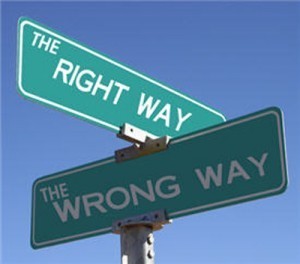 Quick personal update: I'm working on a new book with a fairly audacious goal: to compile the world's best talent-development advice into a short handbook for teachers, students, athletes, musicians, parents, coaches, and pretty much anybody.
Quick personal update: I'm working on a new book with a fairly audacious goal: to compile the world's best talent-development advice into a short handbook for teachers, students, athletes, musicians, parents, coaches, and pretty much anybody.
The book will be called The Little Book of Talent, and it will contain around 75 rules — one rule per page. The rules will address how to improve your practice, increase your motivation, and make the most of the limited time you have.
Here's a sneak preview:
Rule: Remove Your Watch
When it comes to measuring practice, we reflexively obey clocks. We naturally presume that an hourlong practice is twice as good as a half-hour practice. This reasoning is faulty, because it creates the false expectation that you will succeed merely by filling the allotted time. Deep practice is not about time passing, but about the number of times you stretch yourself to the edge of your ability, make mistakes, and fix them. Studies show you can accomplish more learning in a deep 10 minutes than a shallow two hours.
So instead of counting minutes or hours, count your reaches. Instead of saying, "I'm going to practice piano for 20 minutes," instead tell yourself "I'm going to do five reps of that new song." Instead of planning to hit golf balls for an hour, plan to make 25 quality swings with each club.
Rule: Practice in Ten-Minute Segments
TV executives who schedule commercials have long known what scientists are just figuring out: your natural span of attention is around ten minutes. Therefore, it's smart to organize your practice into short, intense sessions with a quick breather in between. Using ten-minute segments creates a clarity of target, and avoids the pitfall of mushy, vague practice. (This is one of the reasons coach John Wooden set up his drills to last around ten minutes each.)
Divide your practice into segments, with each segment focused on reaching for one particular goal — a new move in your repertoire. Don't worry if you don't perfect the move in that time — you can always come back to it. The point is not to get it perfect the first time, but to build a system that helps you improve steadily and systematically.
Rule: Be Willing to Be Stupid
Being willing to endure the emotional burn of failure is a prerequisite for improvement, since without it we are cut off from the wellspring of our progress: reaching, failing, and learning from our mistakes. As baseball Hall of Famer Lou Brock said, "Show me a guy who is afraid to look bad, and I'll show you a guy I can beat every time."
Rule: "Practice Begins When You Get it Right"
This is a saying from violin teacher Kimberly Meier-Sims, director of the Suzuki program at the Cleveland Institute of Music. I like it because it addresses the common misconception that our first moment of success represents the finish line. To the contrary: getting it right is not the finish, but the beginning. It marks the moment when the real work begins; the moment when you begin (through reaching and repetition) the process of taking ownership of your skill.
Rule: Try Sh*t
Practicing the same thing over and over in exactly the same way seems like a smart thing to do. Problem is, it's usually not. Studies show that variable practice — where you move around, experiment, try new things and see how they work — is far more effective than "blocked" practice with no variance. A good example is basketball free throws, where practicing from variable distances produces skill far faster than practicing from the same distance every time.
The reason this works is that embracing variability helps us sharpen our control — our ability to make small, crucial changes to adapt our performance to the situation. When we make a habit of experimenting — when we try sh*t, and do it systematically — we are increasing our ability to modulate our performance.
***
Now comes the question. One of the things I've enjoyed most about writing this blog is the consistently high level of discussion that it generates — the comments, the emails, the links you share with me and the rest of the readers of this blog. So I feel compelled to ask: what nuggets of practical advice have worked best for you or for someone you know? What other kernels of proven wisdom belong in this book?
Feel free to email me or, better, share your thoughts and ideas in the comments section below so others can use them too. If I end up including your ideas in the Little Book, you will have both my ardent, heartfelt thanks as well as an inclusion in the book's not-so-little acknowledgements section. Thanks!
PS — Let me start by thanking the remarkable Dr. Peter Vint of the U.S. Olympic Committee's Performance Services Division — the "Try Shi*t" rule came from him.
March 9, 2011
Stare to Win
 If you were to visit a dozen talent hotbeds tomorrow, you would be struck by how much time they spend staring.
If you were to visit a dozen talent hotbeds tomorrow, you would be struck by how much time they spend staring.
I'm not talking about merely looking. I'm talking about active staring — the kind of raw, unblinking, intensely absorbed gazes you see in hungry cats or newborn babies.
What's more, the physical spaces seem frequently designed for staring: practice areas are shared among different groups, so that older and younger can mix (and stare). Walls feature photos and posters of local heroes (the better for staring). Training sessions often seems to be augmented by injections of high-octane staring.
This pattern of behavior strikes most of us as strange and surprising, because to all appearances, staring seems kind of dumb. More important, most of us instinctively view staring as passive — and when it comes to teaching/parenting/coaching, there is no greater perceived sin than tolerating passivity. We strive to create environments of constant, purposeful action that makes our classrooms and playing fields resemble a neverending episode of Iron Chef. Just staring? It seems like a waste of time.
But is it? Or is there something powerful going on beneath the surface?
I recently visited a group of Special Forces soldiers who had recently taken an expedition to an exotic, far-off place: the corner offices of General Electric. The soldiers spent a few weeks in the boardrooms, watching top executives at work. The soldiers didn't have any responsibilities other than watching the GE execs make decisions, communicate, and work together. Basically, they stared. And when they returned to their unit, the Special Forces commanders (who'd set up this experiment) noticed an immediate and pronounced boost in performance. They made better decisions, they communicated more clearly.
Another example: classical music teachers around the world have been stunned in the past few years by the quality of learning going by watching great performances on YouTube. There aren't any real classes, per se, but rather a space where people stare at Heifetz, Perlman, Lang Lang et. al., copy them, and get better.
And another: In a famous episode of 60 Minutes, tennis teacher and author Timothy Galwey taught a person who'd never played tennis before to hit a decent forehand in 20 minutes — without uttering a word. It was all via the stare.
So what's happening in these cases?
Three things, I'd say:
First, mimicry. Staring is the fastest, most efficient way to imprint a skill on our brains — far more efficient than trying to learn through the keyhole of words. (First the teacher has to come up with the right word, then the learner has to absorb/understand it, then the learner has to convert that word into an action — it's a multi-step conversion process, with the possibility for error at each step.)
Second, high-quality feedback. Active staring gives us a way to measure our performance against those who are better than us. Once their performance is imprinted, we can see how we compare, and make adjustments accordingly. We can feel where we fall short, and fix it.
Third, igniting motivation. Staring is the royal road to passion, because it's the main way we link our identities with other people. Those photos of heroes around the talent hotbeds are not a coincidence, because they send a signal that creates a response from the starer: those dudes did it. Why can't I?
To evolutionary-psychology types, the hidden benefits of active staring come as no surprise. For millions of years, long before language existed to motivate and inform us, our brains learned by staring — and we're still good at it. Staring is a neural combination platter — fuel for both learning and motivation.
So the question becomes one of design — specifically, how do we mimic the talent hobeds and get more staring into our lives? I'd suggest four ways:
Pick quality targets. Start collecting a video catalogue of brilliant, stare-worthy performances (YouTube is handy for this). All the better if there are slow-motion versions.
Treat staring as a daily fuel stop. Set aside five minutes per day for watching brilliance.
Design stare-friendly spaces. Isolation kills motivation — make sure age groups get a chance to closely observe each other, to see what they might become.
Respect the stare. If you catch someone staring at something or someone (presuming here that it's something vaguely worthwhile), realize what's going on and give them some room. There's some important stuff happening beneath the surface.
February 24, 2011
Breaking Ceilings
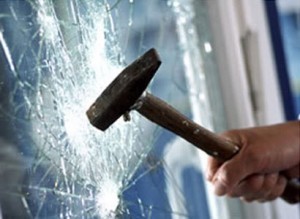 We got a ping-pong table at Christmas, and within days my 15-year-old son and I were seriously, hopelessly addicted. At first, I beat him regularly — 21-15 would be a typical score. Occasionally, I even dialed my game back a notch, so the game would stay excitingly close.
We got a ping-pong table at Christmas, and within days my 15-year-old son and I were seriously, hopelessly addicted. At first, I beat him regularly — 21-15 would be a typical score. Occasionally, I even dialed my game back a notch, so the game would stay excitingly close.
But then one fateful week something changed. The games were suddenly getting closer. Uncomfortably close. Then, with quiet inevitability, something tipped. The kid started winning. Not just winning, but thumping me with increasing ease, to the point where I began to suspect he was dialing it back for me.
Something had changed — or rather hadn't changed. While my son kept getting better, I'd stopped improving. I had to face the unpleasant truth: I'd bumped into my ceiling.
We bump into ceilings all the time — at work, in sports, in music, in every area of performance. But when we look deeper, this area is wrapped in mystery. What's causing the ceiling, and how do we get through it? The mystery is deepened by the fact that our skills in navigating that encounter — our ceiling IQ — might be one of the most important factors of our longterm performance.
When we encounter a performance ceiling, we instinctively make a couple natural presumptions:
1) That we've reached our natural limit — the point where our skills plateau.
2) That the best way past the limit is to keep grinding – to grit our teeth, stick with our methods and to defeat the ceiling through sheer cussed persistence.
The question is, are our instincts right? Or are there other, smarter ways to crack through our ceilings?
We get some insights from this article written by Josh Foer called Secrets of Mind-Gamer. Foer, a twenty-something science journalist, transforms himself into a memory champion in the space of a single year (memorizing, among other things, a shuffled deck of playing cards as quickly as possible).
At one point in his journey, Foer hit a ceiling. No matter what he tried, he couldn't memorize a deck of cards any faster. He then sought out an expert (who in a parallel familiar to Talent Code readers, turns out to be Dr. Anders Ericsson). The ever-resourceful Ericsson gives Foer some surprising advice: speed up your practice. Force yourself to go too fast. Force yourself to make mistakes. Analyze those mistakes, find your weak points, and fix them.
Foer and Ericsson's speed strategy works beautifully. Foer goes on to win the memory championships and set a new American speed record for card-memorization. It's an intriguing story (and looks to be a fascinating book). But mostly it's useful because it shines a light on a new way to think about ceilings.
Foer and Ericsson didn't think of the ceiling to be a limit. Instead, they thought of it as a level of automaticity — a point at which Foer became fast, unthinking, and proficient. Automaticity – sort of like our brain's autopilot for specific tasks — is usually a good thing. It helps us walk and talk without thinking too much. But when we want to improve beyond a certain level, automaticity becomes a barrier. We try harder — we grind away — but that just reinforces the automatic circuit. Progress stops.
The solution, then, is not to grind, but to disrupt. To choose a new strategy that breaks up the automaticity, reveals our shortcomings, and allows us to rewire our circuit. To change some factor — in Foer's case, speeding up time — so that he's prevented from being automatic, and thus can improve.
And in light of that, here are a few disruptive tools for ceiling-busting, stolen from various hotbeds:
Use Overspeed: Foer's technique is relatively common among musicians and athletes. Going too fast breaks up the normal rhythms of a skill and allows them to be rebuilt and improved.
Use Underspeed: slowing way down to develop new feel; common to musicians (who, perhaps by many-laddered nature of the work, tend to become ferocious ceiling-busters. For example, world-champion speed typist Albert Tangora likes to type at half-speed when he hits a plateau.
Single Out: Focusing on one key element and working on it in isolation. For example, major-league batters will practice identifying various pitches. They are singling out the visual, pattern-recognition element of hitting.
Seek Fresh Feedback: Finding new metrics — such as videotaping your performance, or seeking out a consult from a new teacher — can quickly lead to new insights and experiments.
Give it Time: Ceilings are as much emotional challenges as anything else, best encountered with a sense of perspective. As George Leonard points out in his book, Mastery, "this is the inexorable fact of the journey: you also have to be willing to spend most of your time on a plateau, to keep practicing even when you seem to be getting nowhere."
Normally, we think of stories like Foer's as inspiration: he tried harder, so he broke through. But this story is not about inspiration; it's really about strategy. He didn't succeed merely because he tried harder, but because he tried in a highly methodic way that was consistent with the way our brains learn — by getting in the zone where we make mistakes and fix them. Talent's not a possession — it's a construction project.
As for my ceiling: it turns out that one half of our ping-pong table can be raised into a vertical position, creating a practice wall. At first it felt strange — the ball, rebounding from a few feet closer than I was accustomed to, shot back at me so quickly that I could barely catch up. It was overspeed in excelsis. But I've done it for a few days now, and I'm hitting the ball pretty well. Playing a real game seems weirdly slow.
Okay, so I still haven't beaten the kid. But the last two games were 21-19 and 22-20. Now I just have to make sure he doesn't find out about my secret practice technique.
PS — From the kid: "Hey Dad, if you don't want me to find out about your practice technique, maybe you shouldn't write about it in your blog!"
February 9, 2011
The Power of Crumminess
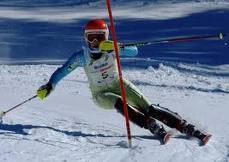 Here's a little-appreciated fact about talent hotbeds: their facilities tend to be rundown. Rusty. Makeshift. Overcrowded.
Here's a little-appreciated fact about talent hotbeds: their facilities tend to be rundown. Rusty. Makeshift. Overcrowded.
In a word, crummy.
Exhibit A could be the North Baltimore Aquatic Club, which has produced Michael Phelps and a squadron of other top national swimmers despite its considerably-less-than-lovely setting. Or Anand Kumar's tin-roof math class in India where an astounding 78 percent of the students are accepted to India's Harvard, the Indian Institutes of Technology. Or any of another dozen other hotbeds where this precise atmosphere is repeated so often that it stops feeling like a coincidence, and starts to feel more like a fingerprint, or a mathematical equation: Crumminess + Crowdedness = Beautiful Talent.
This strikes most of us as surprising, because to the modern American/European mind, crumminess and crowdedness are considered deeply undesirable. We instinctively strive for groomed fields, top-level technology, comfortable surroundings — and enough space where each age group can gather in splendid isolation.
The question is, is talent developed better in roomy, well-appointed facilities? Or is there something else going on in these remote hotbeds? To put it simply, are there any advantages to being crummy and crowded?
We get an interesting data point from Vermont's Burke Mountain Academy, a bona fide hotbed of downhill skiing talent (it's produced 40-plus Olympians in its 30 years). Burke's facility is far from rundown (though the classrooms and dorms tend toward the spartan), but it has two features that set it apart: an undersized ski hill, and an ancient, creaking beast of a ski lift that, by all appearances, should have been replaced long ago. It's an old-fashioned poma lift, and it works like this: you stand on the snow, grab onto a bar/seat contraption, and get dragged uphill.
Most visitors who come to Burke see the old poma lift and presume that it'll be replaced soon by something faster and more efficient. But the teachers and coaches of Burke would never think of it. To their minds, the poma lift might be their most valuable resource.
From the poma lift, young skiers get a catbird seat to watch the older, better skiers make turns. That physical closeness transforms the small ski hill into a rich kingdom of watching and learning, not to mention motivation. Kids on that poma lift receive the privilege of seeing up close who they might become, if they work hard.
We're all acquainted with the phenomenon of the scruffy underdog from the remote country who rises up and defeats big, rich Goliath — we see it all the time in sports, music, and business. And we naturally interpret their success as evidence of the superior hunger of poor countries. They want it more. They're tougher. They're quintessential underdogs.
But I think Burke and the other hotbeds gives us a new way to think about underdogs. Crumminess and crowdedness, used properly, can be advantages. The skiers from Burke only look like underdogs — in fact, they're the overdogs, because they've designed the perfect space to create deeper, better practice and ignite more motivation.
So what do the rest of us do? Should we demolish our good facilities and replace them with crowded, tin-roofed structures? Well, not quite. I think it's more useful to look closely at the useful elements from the hotbeds and try to copy them. A few ideas:
1. Find ways to mix age groups. Isolation diminishes motivation. Nothing creates effort and intensity like staring at older talent, someone who you want to become. Putting groups together — even in passing, as on the poma lift — injects a burst of motivational electricity.
2. Aim to make facilities spartan and simple. Research shows that luxurious surroundings diminish effort — and why not? It's a signal to our unconscious minds that we've got it made — why should we keep taking risks and working hard?
3. When given the choice, invest in people over facilities. Teachers are the real engine of the day-by-day learning process that drives any hotbed. The addition of one master teacher creates more talent than a million dollars' worth of bricks and mortar.
January 26, 2011
Stealing Talent: A Pickpocket's Guide
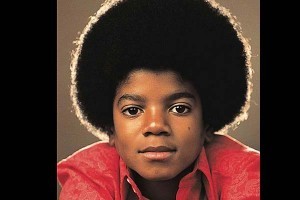 Of all the strange and surprising patterns of talent distribution, few are stranger or more surprising than the phenomenon called the Michael Jackson Law. This is the rule that the most talented performer in a family musical group will be among the youngest children.
Of all the strange and surprising patterns of talent distribution, few are stranger or more surprising than the phenomenon called the Michael Jackson Law. This is the rule that the most talented performer in a family musical group will be among the youngest children.
Consider:
The most talented Bee-Gee? Andy, the youngest.
The most talented Jonas brother? Nick, the youngest.
The most talented Hanson brother? Zac, the youngest.
The most talented Andrews Sister? Patty, the youngest.
The pattern isn't exactly new. Mozart and JS Bach were also the babies of their families.
The question is, why? Why are the Tito Jacksons and Nannerl Mozarts of the world fated for obscurity? Is it simply a coincidence? Or is there something deeper going on?
There's plenty of interesting research on birth-order that seeks to explain these kinds of patterns. Most of it focuses on intra-family dynamics and unconscious motivational power of role models — and it's fascinating stuff, no question. But I think it overlooks something more basic and, for us, more useful.
I think the younger kids are more talented because they have more opportunity to steal. That is, to spend lots of hours intensely watching their siblings, borrowing what works, and discarding what doesn't. To use their siblings as a test kitchen for developing their own circuitry.
As a skill-building method, theft is historically underrated. While Picasso was a big proponent (as he put it, "Good artists borrow. Great artists steal"), modern culture tends to take the Puritan view that it's more virtuous to figure things out for yourself.
While I find this view admirable, I do not find it shared by many top performers I've encountered. In fact, the opposite. Most top performers tend to be incorrigible thieves, relentlessly on the prowl for new ideas, methods, and techniques. You might even say that stealing is their greatest talent.
Good examples of this include Bob Dylan (who never met a poet he couldn't rip a lyric from), John Wooden (who spent each offseason intensively stealing ideas along a single topic — such as free-throw shooting), and the Green Berets of the 5th Special Forces Group, who recently started a program that sends their soldiers into the boardrooms of General Electric, in order to crib ideas they might employ on the battlefield.
With that in mind, here are a few ideas — stolen, naturally — that the rest of us might use. The idea behind them is to recreate the same daily environment that Michael Jackson, Andy Gibb, and Nick Jonas profited from: a habit of constantly eyeing a group of performers, and seeking to pickpocket something shiny and useful.
1. The YouTube Method: Spend 5 daily minutes watching a great performer. Reading an instruction book is fine — but actually watching a Ben Hogan golf swing or a Don Draper sales pitch — then watching it again — takes full advantage of our brain's innate ability to learn by mimicry.
2. Buy a notebook and try to steal one good idea each day. Write it down so you can keep track of what works and what doesn't.
3. Cast your net widely. Find parallel worlds that employ the same skills you are seeking to learn. Aspiring rock guitarists can learn from by watching Yo-Yo Ma's fingerwork. Aspiring soccer players can learn by watching Roger Federer's balance and footwork. Aspiring writers can learn by dissecting song lyrics.
4. Ask. If you're in a position to make a connection and ask someone about their methods and techniques, there's never been an easier time to do it. People love to talk about their talents.
January 12, 2011
Have You Had Your Vitamin S Today?
 When was the last time you were completely, utterly alone?
When was the last time you were completely, utterly alone?
When you map the lives of talented people, some strange and surprising patterns emerge. One pattern I've noticed lately has to do with their general level of social connectivity; that is, do they tend to spend a lot of time alone, or do they prefer to be surrounded by people? Are they solitary geniuses working away in a candle-lit apartment? Or are they glittering comets flying across the social galaxy, constantly bouncing into new people and ideas?
Here's the surprising part: many talented people seem to be both. Their lives contain a paradoxical structure, alternating between periods of utter solitude and periods of robust connectivity.
Mozart is a nice example, his life oscillating from the carnival of Vienna society to the isolation-tank of his workroom. As he said, "When I am, as it were, completely myself, entirely alone, and of good cheer–say, traveling in a carriage or walking after a good meal or during the night when I cannot sleep–it is on such occasions that my ideas flow best and most abundantly."
Pablo Picasso, who was no shrinking violet when it came to connecting, took a similar approach: "Without great solitude no serious work is possible."
In our world solitude is a lost art. Solitude is widely regarded as a quasi-depressing situation (what, you've got no friends?). Connectivity, on the other hand, is regarded as an almost saintly condition — an indispensable framework for creativity, and genius. Connection definitely has its merits — as Steven Johnson and others have vividly showed, connections matter hugely for the sharing of ideas and innovation.
But as the lives of Mozart, Picasso, and others show, connectivity is only half of the talent-building equation. The other half is found inside the mystery of the candle-lit studio, in solitude and isolation. And here's where we find the modern problem, because solitude is an increasingly scarce resource.
In fact, solitude is so scarce that we have come to regard it as a luxury — something to be found on vacation, or as an unexpected oasis amid the endlessly unfurling savanna of a busy life. When we get it, we're surprised and gratified, but the truth is, most of us don't entirely know what to do with it.
This is especially true when it comes to kids. (If you're a parent, do a quick calculation: how much total isolation — when you were in their own space, completely alone — did you have on a typical Saturday in your childhood? How much does your kid have this Saturday?)
The problem, I think, is not that we undervalue solitude. The problem is that we are thinking about solitude in the wrong way. Because solitude is not a luxury to be enjoyed on rare occasions. It's far closer to a vitamin — something essential that our brains and bodies require to thrive. Think of it as Vitamin S. It's a daily supplement that centers our identities and our desires, that grants us the space to experiment, to make mistakes and correct them, to get obsessed solving the endless series of tiny, fascinating problems that form the foundation of any achievement.
If we want to increase our daily allotment of Vitamin S, we first need to make clear what solitude really is. Because it's not mere peacefulness, not mere unplugging, not mere escape. It's an escape into something bigger — it's when, as Mozart said, we are in the state of being "completely myself, entirely alone."
Real solitude seems to share three basic qualities:
1) It's gotta be reliable — which means there have to be real, impermeable barriers that you alone control. It's not really solitude if someone can interrupt it on a whim.
2) It's gotta last. It's not solitude if it's only a few minutes.
3) It's gotta be repeatable. Productive solitude is about developing a routine — a kind of workspace for action — which is tough if the platform is constantly shifting.
If you want to go deeper on Vitamin S, check out this brilliant essay, Solitude and Leadership, by William Deresiewicz. Or see this fine website on creativity and solitude (where you can find the Mozart/Picasso stories, along with lots of other case studies).
The next question is, how do we build more solitude into our lives? Is there perhaps a way to use all this technology to create more solitude? (Is there an app for that?)




